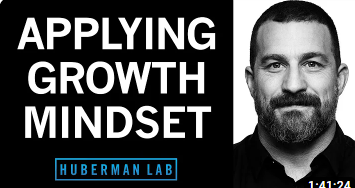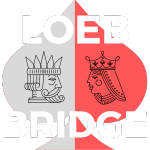The article below was shared owith teachers across the country in Issue 247 Winter-Spring 2024 of the American Bridge Teacher Association's magazine. Here is a link to the video presentation on this topic that I gave to the RealBridge & BAMSA: Teacher and Coach Conference.

Bridge Learning With A Growth Mindset David Loeb
Bridge teachers can and should take advantage of Carol Dweck’s research on mindsets to promote bridge learning.
Carol Dweck, Ph.D. is a professor at Standford University. In her “mindset” book, Carol differentiates a growth mindset and a fixed mindset.
Growth mindset believes:
- Skills and intelligence can be grown and developed
- People who are good at something are good because they built that ability
- They are in control of their abilities
- Skills are built -- you can learn and grow
Fixed mindset believes:
- Skills and intelligence are set
- You either have them or you don’t
- Some people are just naturally good and others are not
- They are not in control of their abilities
- You can’t learn and grow
Using neuroimaging, researchers have found a link between a growth mindset and activation in two key areas of the brain: the anterior cingulate cortex (ACC) which is involved with learning and impulse control, and the dorsolateral prefrontal cortex (DLPFC) which is involved with error-monitoring and behavioral adaptation. People with a growth mindset see errors as opportunities to learn and improve. Their neural activity shows a greater allocation of attention to mistakes. People with a fixed mindset have higher activity in their limbic system that deals with regulating emotional responses. They view negative feedback as a threat to their self-perceptions, not as an opportunity to improve. The underlying neural activity helps explain why a growth mindset promotes learning and resiliency. A fixed mindset tends to inhibit learning.
What does this have to do with teaching bridge?
A growth mindset positions students to learn more quickly and increases resiliency when facing a setback. After making a mistake, a bridge student with a growth mindset will ask themselves “what should I have done differently?” or “what clues were available to find the winning line of play?” A bridge student with a fixed mindset might think “I went down because I am a bad declarer” or “We got too high because I am a bad bidder.” It is no surprise that the mindset focusing on how a mistake can be avoided, promotes learning.
How teachers can promote a growth mindset to increase bridge learning?
Teachers should share their belief that abilities improve with effort and that taking on challenges like bridge helps you form neural connections which increase your abilities. Sharing studies of the benefits of a growth mindset encourages students to apply effort to improve their skills. Asking students to watch Andrew Huberman’s video, or suggesting students read Carol Dweck’s “mindset” book are excellent ways to help students understand the value of a growth mindset.
your abilities. Sharing studies of the benefits of a growth mindset encourages students to apply effort to improve their skills. Asking students to watch Andrew Huberman’s video, or suggesting students read Carol Dweck’s “mindset” book are excellent ways to help students understand the value of a growth mindset.
Teachers should get into the habit of praising the process rather than the result. Don’t tell a student “great play to make 3NT” or “brilliant lead to beat 4♠ .” Reinforcing the process helps cultivate a growth mindset. Here are a couple examples of praising the process:
- “I like the way analyzed who was the dangerous opponent and worked to keep them off lead”
- “You listened carefully to the auction and assessed how the points were distributed. I like how you used those inferences to determine a trump lead was needed to reduce ruffing power.”
See Carol Dweck’s “mindset” book for many examples of the benefits of praising the process.
Bridge teachers should encourage students to challenge themselves. Leaving your comfort zone provides opportunities to learn. Playing in open games provides opportunities to learn. Setbacks and confusion are part of the learning process. A growth mindset helps students have the resilience and drive to learn from setbacks.
One of the best learning opportunities is a growth mindset oriented discussion after the game reviewing the boards played. Suggest students circle boards they questions about as they play. Knowing they will have an opportunity to discuss hands with a teacher decreases the urge to discuss hands at the table. Remind players that they shouldn’t provide unsolicited advice at the table. Advice from players is often wrong. Even if it right, it is often result oriented rather than the process oriented, focused on the what rather than the why. At the post-game discussion, ask students what boards require commiseration. Ask what successes they want to share. When discussing a board or a decision, focus on the process. What fundamentals are involved? What clues are available? Focus on the why, not the what. Look for points in the process that the student did well. Make certain to reinforce the effort. Share learning points from a process perspective, e.g. “You recognized the need to delay drawing trump so you could discard a loser.” Then add the learning points, e.g. “Once you discarded the loser, you want to ask yourself if there is a further need to delay drawing trump.” Give the student the opportunity to reflect on a decision to help them better incorporate the decision making process into their game.
Structuring Lessons for a Growth Mindset
Growth mindset bridge learning is best served by lessons positioning students to use reason rather than memorization. Lessons should focus on the why, rather than the what. Emphasize the fundamentals. The scoring system drives game priorities and the goals players have during an auction. Teaching the benefits of a trump fit helps students understand why playing in an 8+ card major suit fit is typically preferable to a playing in a no trump contract. Teaching a natural style of bidding promotes using reason rather than memorization. ACOL is an example of a natural bidding system. 2/1 Game Force auctions (using a shape oriented style) are natural after a 2/1 response. Playing SAYC, a minimum opener often needs to conceal their distribution. After a 2/1 response, a minimum opener cannot support their partner’s suit immediately, and cannot show a 2nd suit if it higher than their first suit because doing so would create a game force.
When teaching conventions, discuss the problem a convention solves. Present the convention as an intuitive and efficient way to solve the problem. This approach helps students to reason through the logic of an agreement rather than depend on memorization. See an example in the article below.
A Support Double is used by opener to show exactly 3-card support for responder's suit.
|
Convention |
Context |
Problem Solved |
Description |
|
Support Doubles & Redoubles |
Used by opener after responder bids a suit and RHO doubles or overcalls or below 2 of responder’s suit |
In a competitive auction, responder often needs to distinguish between 3-card or 4+ card support. |
Opener’s double (or redouble) of their LHO’s bid shows exactly 3-card support for responder’s suit. |
Avoid Teaching Bad Habits
Teach students agreements they can use as they progress. It is demotivating to throw away agreements you worked to learn. Certainly, some simplifications are needed when introducing players to bridge, but this can be taken too far. If a better approach can be easily taught, don’t teach a bad habit to simplify the game. In a recent poll on the Bridge Winners forum, I posted a poll asking strong players who frequently play with advancing players what agreements they wish had not been taught to the advancing players. The following agreements received the most “wish they didn’t teach that” votes:
- Need 6 points to respond to an opening bid
- Fast arrival opposite an unlimited hand
- Bergen Raises are more important than Invitational Jump Shifts playing 2/1 Game Force
- A raise of a SAYC 2/1 response isn’t forcing
You can see the poll here.
Summary
Growth mindsets promote learning and resiliency. Bridge teachers can help students develop a growth mindset by sharing evidence of the benefits of a growth mindset and sharing their belief bridge skills can grown with work. To promote growth mindset bridge learning, teachers should praise effort, not results. Lessons should position students to use reasoning to choose their bid or line of play. To do so, teach a natural style of bidding. Introduce conventions based on the problem they solve. Review hands after a game focusing on the process. Avoid teaching agreements which will be discarded as players progress.




